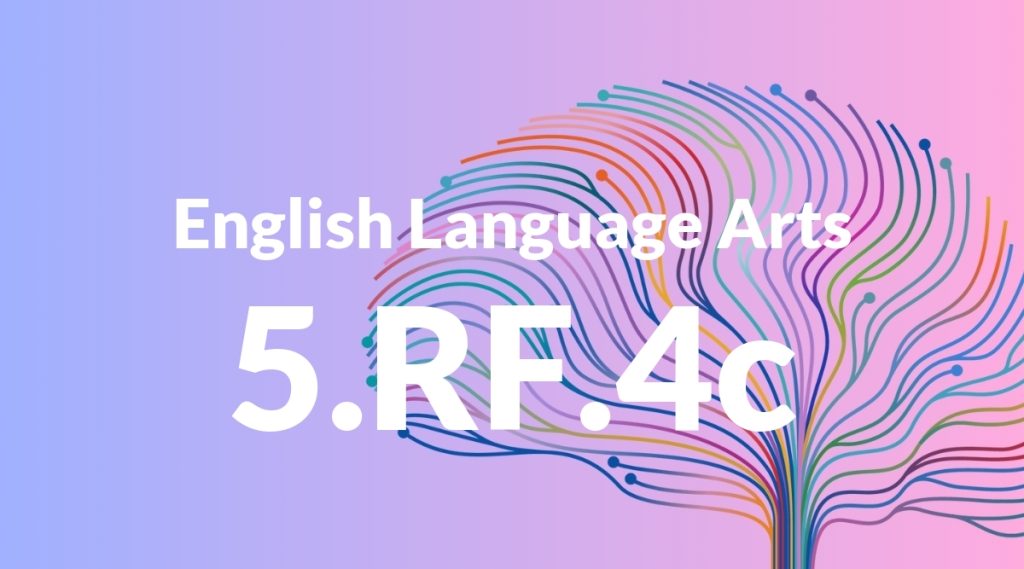Standard: 5.RF.4c – Use context to confirm or self-correct word recognition and understanding, rereading as necessary.
Grade level: Grade 5
Subject: English Language Arts
Domain: Reading: Foundational Skills
Teacher Overview
This standard focuses on helping students use context clues to confirm or self-correct their understanding of words and phrases in a text. It is crucial for developing reading fluency and comprehension, as it empowers students to independently navigate unfamiliar vocabulary and complex sentences. Students should be familiar with basic sentence structures, common words, and simple context clues. They should also have some experience with using context to infer the meaning of unknown words.
By mastering this standard, students will be better equipped to tackle more complex texts with confidence, enhancing their overall reading comprehension and fluency.
Common Misconception 1
A common misconception is that context clues always provide the exact meaning of a word. This is incorrect because context clues often only give hints about the meaning, requiring students to use additional strategies to fully understand the word.
Intervention 1
To address this misconception, teach students to combine context clues with other strategies, such as looking up the word in a dictionary or discussing it with peers or teachers.
Common Misconception 2
Another misconception is that rereading indicates poor reading skills. In reality, rereading is a valuable strategy used by proficient readers to enhance understanding and clarify confusion.
Intervention 2
Encourage students to see rereading as a positive and necessary step in the reading process. Share examples of how successful readers use this strategy to improve comprehension.
Prerequisite Knowledge
Students should have a basic understanding of sentence structure, common vocabulary, and how to use simple context clues to infer the meaning of unfamiliar words.
Subsequent Knowledge
After mastering this standard, students will be able to independently read and understand more complex texts, improving their overall reading comprehension and fluency.
Instructional Activities
- Context Clues Detective: Have students read a passage and highlight unfamiliar words. Then, work in pairs to use context clues to determine the meanings.
- Vocabulary Journals: Students keep a journal of new words they encounter while reading, noting the context clues that helped them understand each word.
- Rereading Relay: In groups, students take turns reading a challenging text aloud, pausing to discuss and use context clues to understand difficult words.
- Context Clues Bingo: Create bingo cards with different types of context clues (definition, synonym, antonym, example, etc.) and have students identify them in texts.




